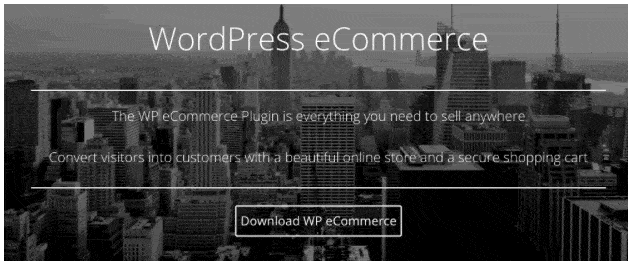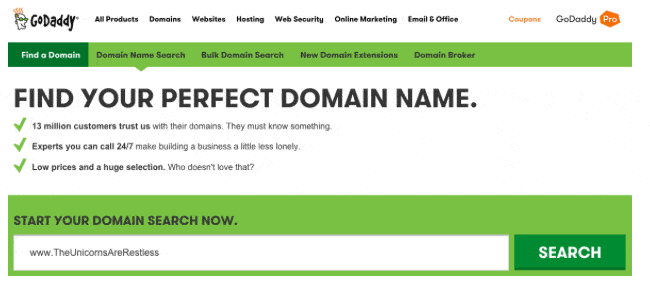A Beginner’s Guide to Making Money Through eCommerce Stores
The internet and eCommerce stores have changed how businesses operate and people shop.
This drastic change is enticing to people with an entrepreneurial edge.
Global reach means global opportunities for profit [insert rubbing hands together and maniacal laughter].
If you can plan and see opportunities on the horizon, you can develop fantastic ideas that will turn killer profits.
You just need the wherewithal to set up an eCommerce solution.
A Beginner’s Guide to Making Money Through eCommerce Stores
Yes, there’s a lot to learn about eCommerce!
However, if you’re willing to put in the time and elbow grease, you can soon be on the golden path to profit.
Before you can start heating your house by burning hundred-dollar bills, there are some technical topics and terms to learn along with basic business principles.
1. You Need a Product
The product is the first thing you must consider when entering the eCommerce store business.
Unlike that shady Dominican investment opportunity your uncle Leo offered, eCommerce stores require doing some work.
Decide what you have to sell, and then do the legwork to prepare your product for the market.
For some, working with a local supplier may be more accessible, while online suppliers will be your best source for others.
You will need to consider storage options if your product is:
- unique (unicorn droppings, left-handed sandals, etc.)
- can only be purchased from the weird old man down the road
- is something you make
If they can purchase your product online, it’s probably easiest to use online suppliers to simplify the process.
If your product is digital, like music, software, DVDs, or photos of you riding bareback on a dolphin, you’ll need to find an electronic delivery method.
Many housed eCommerce store solutions like Shopify make electronic product delivery easy and manageable.
2. You Need a Domain
Here begins the techno jargon.
After determining what you will sell, you need to find a domain name.
A domain name is simply your website address.
You know what I mean.
CNN.com, BackstreetBoys.com, and NewEnglandPatriotsSuck.com are all domain names.
You should look for a domain to complement your product so it’s easier to market.
Long domains are hard to remember, so www.EssentialOilsForPeopleWithTypeABlood.com might not be your best choice.
Get creative and have fun with this step.
The latest domain name extensions make it even easier to be creative with your domain name.
3. You Need Hosting
The next techno topic on the agenda is hosting.
Just like your brick-and-mortar store needs a parcel of land to sit on, your eCommerce store needs a slice of cyberspace.
You can get this with a hosting company.
A hosting company gives your domain a spot on its servers, which connects you to the Internet so people can find you.
A hosting company also gives you space to store all the files associated with your websites, like photos, music, text, and video.
There are thousands of hosting companies to choose from, with many offering plans that start at a couple of bucks a month.
Pick a company with a solid reputation, like Bluehost, DreamHost, or GoDaddy.
4. You Need a Website
This will probably seem the most intimidating part of starting your eCommerce adventure.
You’ll probably hear terms and acronyms that make little sense.
Don’t let the techno jargon scare you.
To keep you from soiling your pants out of fear, I’ve broken things down for you step by step.
Your website will be your “storefront.”
Like a brick-and-mortar store, you need a façade inviting customers to buy your product.
If your store looks inviting, people stop by to check it out.
If it looks like the vacation home of Jeffrey Dahmer, you can kiss your customers goodbye.
Same deal with eCommerce.
Your website is your facade.
It should look terrific.
Clean.
Appealing.
Not like something designed by AOL in the early ’90s.
Your site should feel professional.
You want your contact information clearly visible and make potential clients feel welcome by making things easy to navigate.
5. You Need a Content Management System (CMS) and a Shopping Cart
Here’s where the techno talk gets a little more intense.
A CMS (content management system) is when a website’s framework is pre-built for you, and you simply install it onto your host.
You can then install additional plugins to bring specific functions to your website.

Most CMS also allow different templates to be installed.
Templates allow you to customize the layout of your website to make it unique to your store or brand, with colors, font types, logos, and a host of other layout options.
Shopping cart plugins bring eCommerce functions to your website, making it simple to sell online.
You don’t have to be a pale-skinned computer jockey who spends his days writing complex computer programs.
You don’t even have to know how to code or program.
Simply add your products through your CMS.

Some popular CMS’ to choose from are WordPress, Joomla, and Drupal.
There are even some CMS that is explicitly designed for acting as eCommerce solutions.
6. You Need a Payment Gateway
After you have your online store set up and your products and descriptions added, you need to collect money.
I mean, that’s the whole point.
You’re not running a charity.
To quote Rod Tidwell from Jerry Maguire, “Show me the money.”
You need a payment gateway.
Payment gateways have to guarantee credit card security.
This is called PCI compliance.
If you host your payment gateway, you are responsible, and you can install an SSL certificate to encrypt the information.
Using a website that acts as a payment gateway, like PayPal, secures the information.
If you choose a hosted eCommerce CMS solution, your payment gateway is included and configured and comes as part of your monthly fee.
These solutions also cover PCI compliance.
All payment gateways require fees, and the fees are based on a percentage of your sales.
It’s a matter of preference and how much control you want when deciding on a payment gateway.
7. You Need a Shipping Plan
People are more impatient now than ever.
Amazon offers free two-day shipping with Amazon Prime, and their “Dash” buttons allow you to reorder specific products with a button.
If you want customers to keep coming back, you need a shipping solution that will send your products to your customers promptly.
Drop shipping is a great way to keep your products moving and you from going insane.
In this method, your supplier simply packages and ships your product to your customer, eliminating yours from having to live at the post office.
8. You Need a Marketing Plan
After you get your store set up and ready to go, you need a plan to market it to people.
Consider using social media, Google, email marketing, SEO, and the thousands of other online tools available.
One crucial marketing strategy is creating consistent content that will drive traffic to your site.
Don’t assume that because you’ve built it, customers will come.
eCommerce is not a Field of Dreams.
In this business, chase your dreams if you want them to come to fruition.
Go For It
eCommerce solutions come in many boxes, just like their products.
This process can seem scary and overwhelming, but there are so many choices that you can use to get started.
Find the one that suits you best and take the risk.
In the comment section below, take a moment to ask questions or share your own tips.
If you found this article helpful, don’t forget to click the share button.












